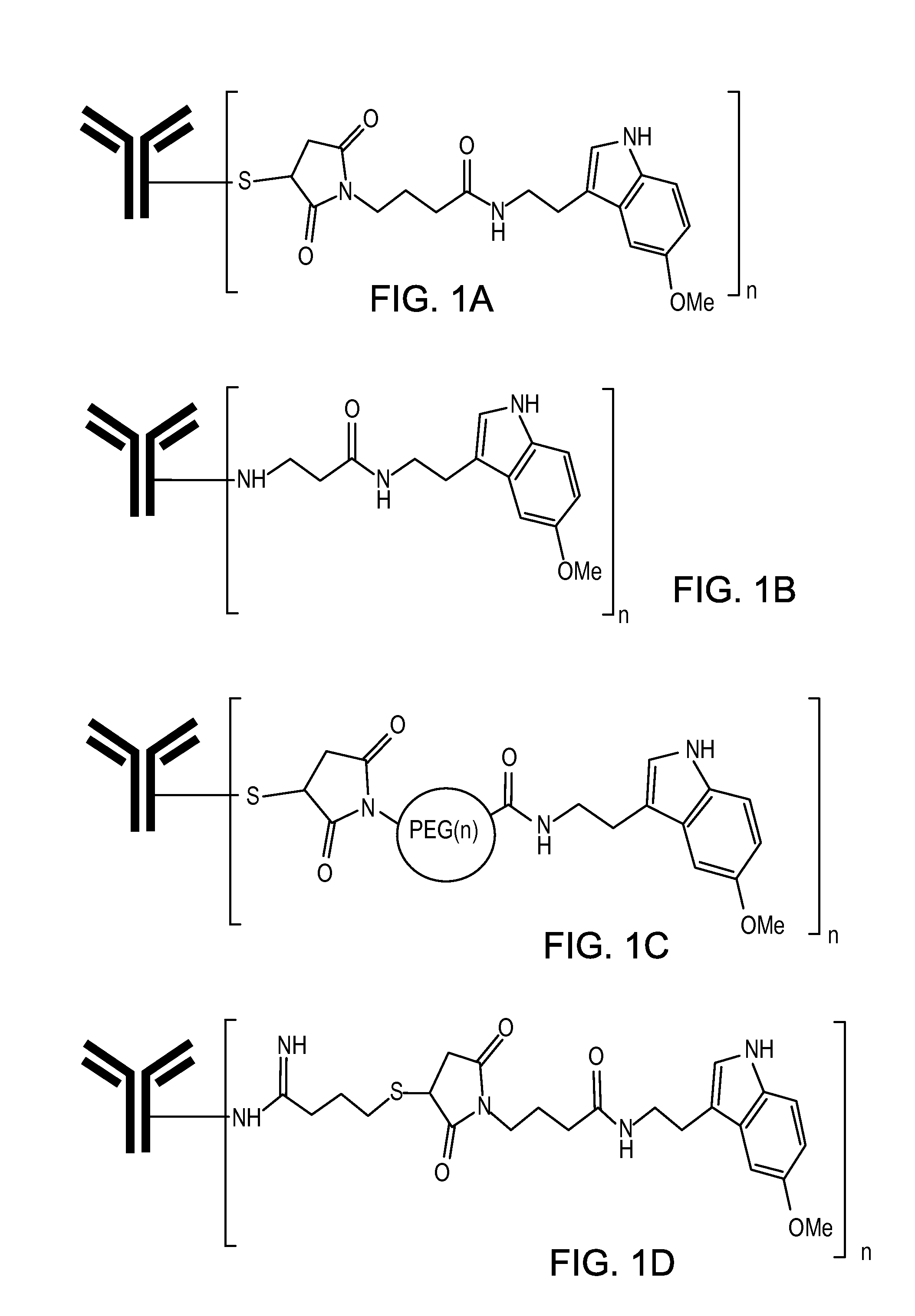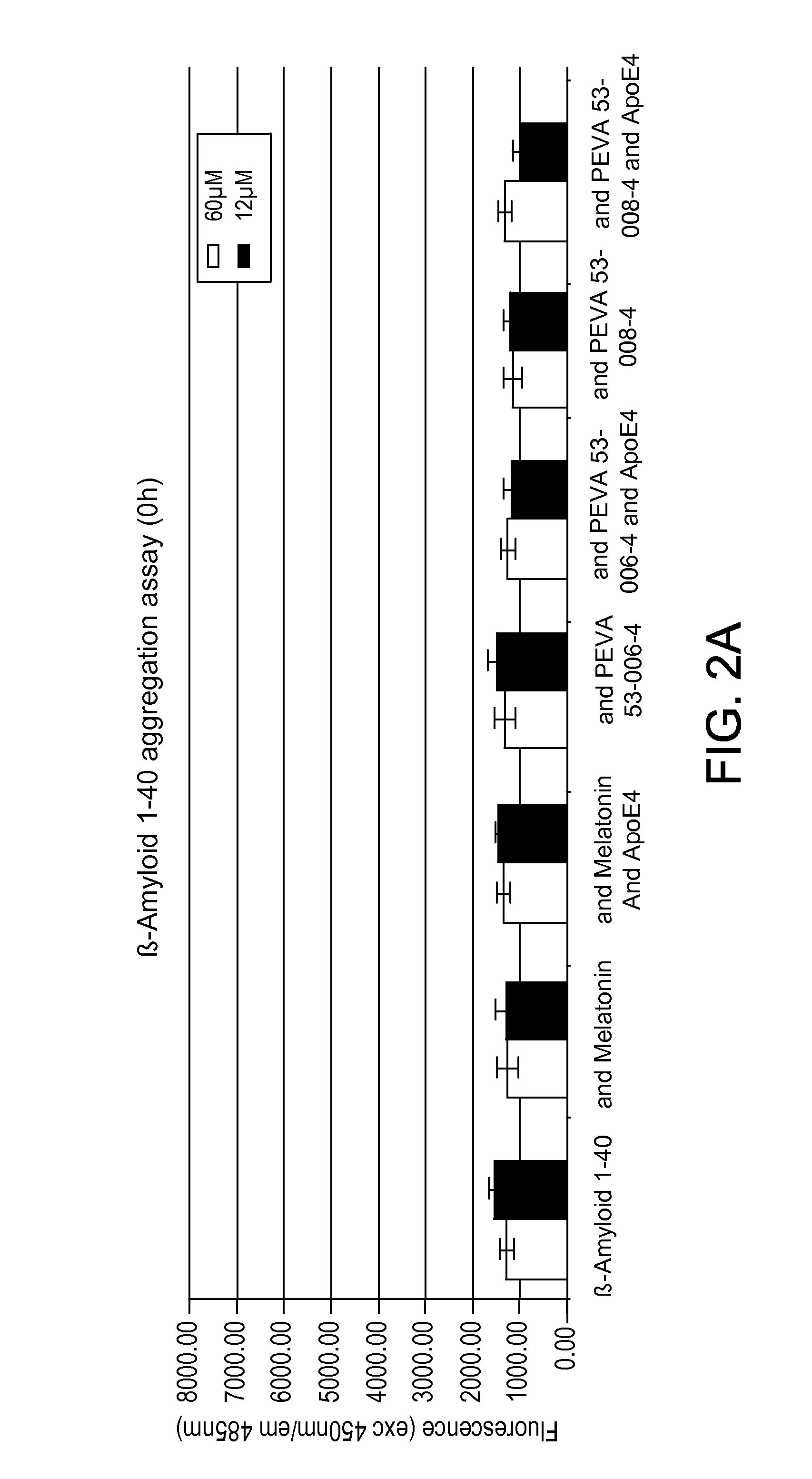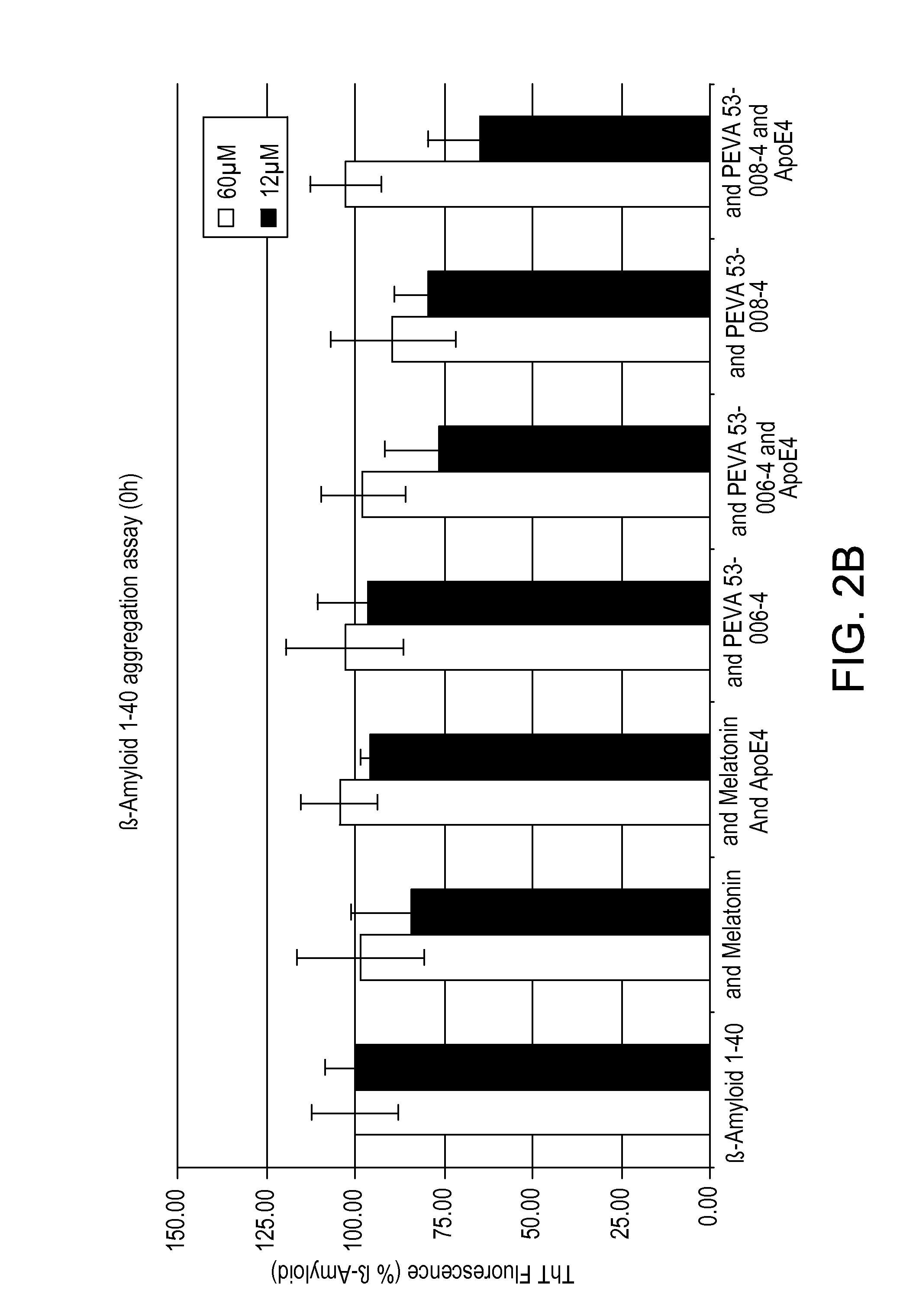Compositions and methods for treatment of proteinopathies
a proteinopathies and protein technology, applied in the field of antibody drug conjugates, can solve the problems of drug failure to produce clinical benefits in patients, increased aggregation of tau and amyloid, and eventual loss of synaptic function and subsequent neuronal death, so as to enhance the clearing capacity of antibodies, reduce inflammation and oxidative stress, and reduce inflammation
- Summary
- Abstract
- Description
- Claims
- Application Information
AI Technical Summary
Benefits of technology
Problems solved by technology
Method used
Image
Examples
example 1
(2R)-2-amino-3-((1-(6-((2-(5-methoxy-1H-indol-3-yl)ethyl)amino)-6-oxohexyl)-2,5-dioxopyrrolidin-3-yl)thio)propanoic acid
[0247]
Step 1. Preparation of 6-(2,5-dioxo-2,5-dihydro-1H-pyrrol-1-yl)-N-(2-(5-methoxy-1H-indol-3-yl)ethyl)hexanamide)
[0248]
[0249]To a solution of 2,5-dioxopyrrolidin-1-yl 6-(2,5-dioxo-2,5-dihydro-1H-pyrrol-1-yl)hexanoate (247 mg, 0.81 mmol) in dichloromethane (10 mL) was added 2-(5-methoxy-1H-indol-3-yl)ethanamine (152 mg, 0.81 mmol) and the mixture was stirred at rt for minutes. The succinimide precipitated as a white solid and LCMS analysis indicated an 89% yield of the desired product and an 11% yield of the side product formed by addition of the amine to the double bond. The reaction mixture was filtered and concentrated in vacuo to afford 6-(2,5-dioxo-2,5-dihydro-1H-pyrrol-1-yl)-N-(2-(5-methoxy-1H-indol-3-yl)ethyl)hexanamide) (300 mg, isolated yield 86%, purity 88%) as a yellow oil. MS 384.2 (M+H+).
Step 2. Preparation of (2R)-2-amino-3-((1-(6-((2-(5-methoxy-1H...
example 2
(2R)-2-amino-3-((1-(1-(5-methoxy-1H-indol-3-yl)-4,20-dioxo-7,10,13,16-tetraoxa-3,19-diazadocosan-22-yl)-2,5-dioxopyrrolidin-3-yl)thio)propanoic acid
[0252]
Step 1. Preparation of 1-(3-(2,5-dioxo-2,5-dihydro-1H-pyrrol-1-yl)propanamido)-N-(2-(5-methoxy-1H-indol-3-yl)ethyl)-3,6,9,12-tetraoxapentadecan-15-amide
[0253]
[0254]2,5-dioxopyrrolidin-1-yl 1-(2,5-dioxo-2,5-dihydro-1H-pyrrol-1-yl)-3-oxo-7,10,13,16-tetraoxa-4-azanonadecan-19-oate (200 mg, 0.389 mmol) and 2-(5-methoxy-1H-indol-3-yl)ethanamine (70.4 mg, 0.370 mmol) were dissolved in N,N-dimethylformamide (2 mL) and stirred at rt for 30 min. The reaction was then filtered and concentrated in vacuo to afford 1-(3-(2,5-dioxo-2,5-dihydro-1H-pyrrol-1-yl)propanamido)-N-(2-(5-methoxy-1H-indol-3-yl)ethyl)-3,6,9,12-tetraoxapentadecan-15-amide as a yellow oil (210 mg, 92% yield). MS 589.2 (M+H+).
Step 2. Preparation of (2R)-2-amino-3-((1-(1-(5-methoxy-1H-indol-3-yl)-4,20-dioxo-7,10,13,16-tetraoxa-3,19-diazadocosan-22-yl)-2,5-dioxopyrrolidin-3-yl)...
example 3
β-Amyloid Aggregation, Thioflavin T, Fluorescence Assay
[0257]In this Example, the activity of the melatonin-cysteine conjugates that were prepared in Examples 1 and 2 were tested to determine their ability to inhibit fibrillogenis to the activity of melatonin in the absence and presence of ApoE4.
[0258]In a NUNC PP 96-well plate 100 μL of MilliQ dH2O was added to the outer wells surrounding the test wells in order to minimize evaporation. Samples in a final volume of 100 μl / well were added to the 96-well plate as follows:
TABLE 2Thioflavin T Fluorescence AssaySample No.Contents1β-Amyloid 1-40 peptide2β-Amyloid 1-40 peptide and Melatonin3β-Amyloid 1-40 peptide; Melatonin; and ApoE44β-Amyloid 1-40 peptide and Example 15β-Amyloid 1-40 peptide; Example 1 and ApoE46β-Amyloid 1-40 and Example 2,7β-Amyloid 1-40; Example 2; and ApoE4
[0259]Ratios of components added to each well were as follows: 60 μM β-Amyloid 1-40: 60 μM Melatonin or Example 1 or Example 2: 0.727 μM ApoE4 or 12 μM β-Amyloid ...
PUM
| Property | Measurement | Unit |
|---|---|---|
| emission wavelength | aaaaa | aaaaa |
| excitation wavelength | aaaaa | aaaaa |
| pharmaceutical composition | aaaaa | aaaaa |
Abstract
Description
Claims
Application Information
 Login to View More
Login to View More - R&D
- Intellectual Property
- Life Sciences
- Materials
- Tech Scout
- Unparalleled Data Quality
- Higher Quality Content
- 60% Fewer Hallucinations
Browse by: Latest US Patents, China's latest patents, Technical Efficacy Thesaurus, Application Domain, Technology Topic, Popular Technical Reports.
© 2025 PatSnap. All rights reserved.Legal|Privacy policy|Modern Slavery Act Transparency Statement|Sitemap|About US| Contact US: help@patsnap.com



